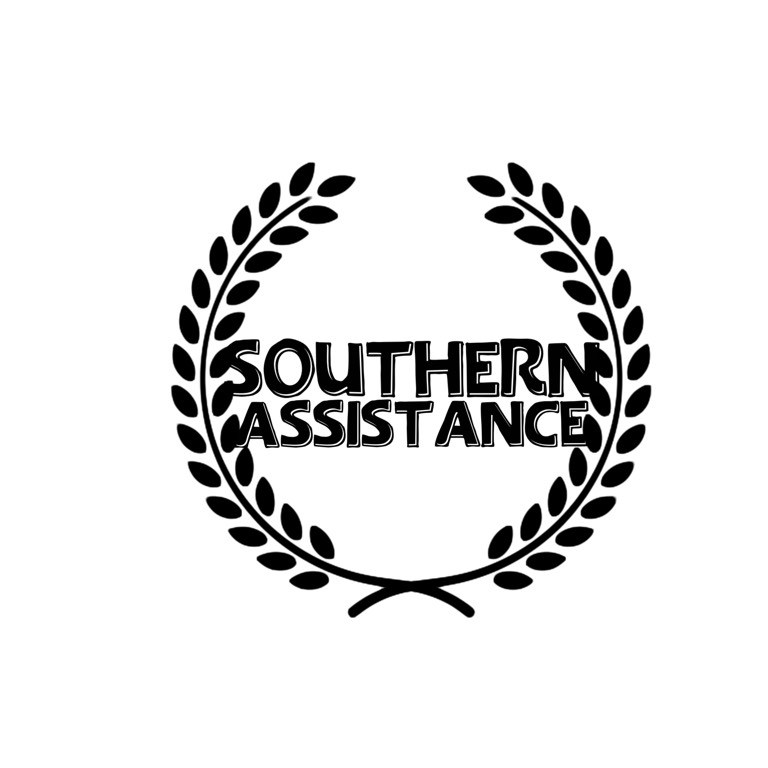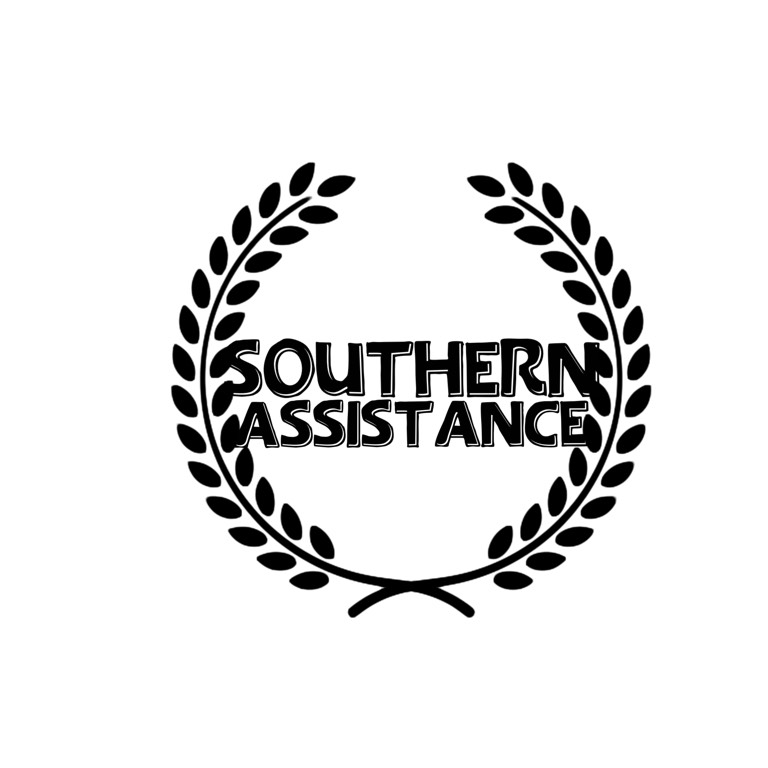Title Page
SCOPE OF ASSESSMENT
-
Site
-
Address of Premises
-
Responsible Person (e.g. employer) or person having control of the premises
-
Person(s) Consulted:
-
Assessor:
-
Areas Inspected:
-
Areas Excluded:
-
Client specific requirements:
-
Assessment Completed on:
-
Date of Previous Fire Risk Assessment
-
Suggested Date for Review
-
Report QA reviewed by:
INTRODUCTION
-
This report is intended to assist you in compliance with Article 9 of the Regulatory Reform (Fire Safety) Order 2005 (the 'Fire Safety Order'), which requires a risk assessment.
The assessment is made to address the risk to life from fire in these premises and, where appropriate, to make recommendations to ensure compliance with fire safety legislation. The report does not address the risk to property or business continuity from fire.
It is recommended that this assessment is reviewed at least annually and is supplemented by routine checks of general fire precautions. Whilst we have made a reasonable effort to access all areas of the premises, there may be some areas that are inaccessible or difficult to access due to the fabric of the building, and to do so would cause unnecessary damage.
The fire risk assessment is based on a combination of observations made at the time of the survey and information provided by you or your representatives. This information is taken in good faith as being factual and accurate.
This assessment does not constitute a compartmentation survey, and checking of the integrity of the fire compartmentation within floor and ceiling voids is outside the scope of this assessment. Should the assessors identify obvious breaches in compartmentation, the report will detail this.
Assessment of the fire risks of external walls and any cladding are excluded from the scope of this assessment; this is outside our expertise. Accordingly, it is strongly recommended that you obtain advice from a qualified and competent specialist(s) on the nature of and fire risks associated with the external wall construction, including any building cladding.
This assessment is intended as a working document that can be used to guide future action aimed at improving compliance with legislation and day-to-day fire precautions. Where precautions have been assessed as falling below the required standards, an Action Plan is provided.
BENCHMARKING
-
This assessment follows guidance provided in:
• Government guidance document(s) supporting the Regulatory Reform (Fire Safety) Order 2005 or Fire (Scotland) Act 2005
• Building Regulations 2010 Volume 1 Dwellings 2019 edition incorporating 2020 amendments for use in England
• PAS 79 1:2020 Fire risk assessment Part 1: Premises other than housing Code of practice
• PAS 79 2:2020 Fire risk assessment Part 2: Housing Code of practice
• Building Regulations 2010 Volume 2 Buildings other than dwellings 2019 edition incorporating 2020 amendments for use in England
• BS9999 : 2017 Code of Practice for fire safety in the design, management and use of buildings
• BS9991 : 2015 Fire safety in the design, management and use of residential buildings. Code of practice
• Other relevant technical British and European standards.
LIMITATIONS
-
The observations and recommendations in this report are directly related to conditions and documentation noted during the site inspection, as well as information provided by the client. The site inspection specifically covered only areas safely accessible, as listed in the scope of works. It's important to highlight that this report is grounded in a Type 1 fire risk assessment, constituting a non-invasive examination limited to the common parts of the property. No invasive survey was conducted.
It's crucial to acknowledge that the risk assessment does not serve as an audit of the health and safety policies, procedures, and arrangements within the client organisation. Additionally, it does not encompass an audit of planned maintenance activities. The examination of mechanical, electrical, plant, and equipment inspection, testing, and servicing records was selective, focusing on statutory requirements.
The recommendations provided in this report are based on the professional expertise and judgment of the risk assessor. It's essential to understand that assessments may be subject to individual interpretation, and an enforcement officer may hold a different perspective.
GENERAL INFORMATION
1. THE PREMISES [Clause 12]
-
1.1. Floors
-
a) Number of floors at ground level and above:
-
b) Number of floors entirely below ground level:
-
c) Floors on which car parking is provided:
-
1.2. Floor Area
-
a) Approximate floor area (m2 per floor)
-
b) Approximate floor area: m2 gross
-
c) Approximate floor area: m2 on ground floor.
-
1.3. Details of construction and layout:
-
1.4. Purpose Groups
-
a) Primary Purpose Group/Occupancy:
- Group 1a - Residential - Flat
- Group 1b - Residential - Dwellinghouse that contains a habitable storey with a floor level a minimum of 4.5m above ground level up to a maximum of 18m.
- Group 1c - Residential - Dwellinghouse that does not contain a habitable storey with a floor level a minimum of 4.5m above ground level.
- Group 2a - Residential (Institutional) - Hospital, home, school or other similar establishment, where people sleep on the premises.
- Group 2b - Residential (Other) - Hotel, boarding house, residential college, hall of residence, hostel or any other residential purpose not described above.
- Group 3 - Office
- Group 4 - Shop and Commercial
- Group 5 - Assembly and Recreation
- Group 6 - Industrial
- Group 7a - Storage and other non-residential
- Group 7b - Storage and other non-residential (Car parks)
- N/A
-
b) Secondary Purpose Group/Occupancy:
- Group 1a - Residential - Flat
- Group 1b - Residential - Dwellinghouse that contains a habitable storey with a floor level a minimum of 4.5m above ground level up to a maximum of 18m.
- Group 1c - Residential - Dwellinghouse that does not contain a habitable storey with a floor level a minimum of 4.5m above ground level.
- Group 2a - Residential (Institutional) - Hospital, home, school or other similar establishment, where people sleep on the premises.
- Group 2b - Residential (Other) - Hotel, boarding house, residential college, hall of residence, hostel or any other residential purpose not described above.
- Group 3 - Office
- Group 4 - Shop and Commercial
- Group 5 - Assembly and Recreation
- Group 6 - Industrial
- Group 7a - Storage and other non-residential
- Group 7b - Storage and other non-residential (Car parks)
- N/A
-
1.5. Hours of Occupation
-
a) Weekdays:
-
b) Weekends:
2. THE OCCUPANTS [Clause 12]
-
2.1. Approximate maximum number of employees at any one time:
-
2.2. Approximate maximum number of other occupants at any one time:
-
2.3. Approximate total number of people present in the building:
3. OCCUPANTS ESPECIALLY AT RISK FROM FIRE [Clause 12]
-
3.1. Sleeping occupants
-
3.2. Disabled employees
-
3.3. Other disabled occupants:
-
3.4. Occupants in remote areas and lone workers:
-
3.5. Young persons employed:
-
3.6. Others:
4. FIRE LOSS EXPERIENCE
-
undefined
5. OTHER RELEVANT INFORMATION
-
undefined
6. RELEVANT FIRE SAFETY LEGISLATION
-
6.1. The following fire safety legislation applies to these premises:
-
6.2. The above legislation is enforced by
-
6.3. Other legislation that makes significant requirements for fire precautions in these premises [other than the Building Regulations 2010 (as amended)]:
-
6.4. The other legislation referred to above is enforced by:
-
6.5. Is there an alterations notice in force?
-
6.6. Relevant information and deficiencies observed:
FIRE HAZARDS AND THEIR ELIMINATION OR CONTROL
7. ELECTRICAL SOURCES OF IGNITION [Clause 13 and Annex B]
-
7.1. Reasonable measures taken to prevent fires of electrical origin?
-
7.2. More specifically:
-
a) Fixed installation periodically inspected and tested?
-
b) Is portable appliance testing carried out?
-
c) Is there suitable control over the use of personal electrical appliances?<br>
-
d) Suitable limitation of trailing leads and adapters?
8. SMOKING [Clause 13 and Annex B]
-
8.1. Reasonable measures taken to prevent fires as a result of smoking?
-
8.2. More specifically:
-
a) Is smoking prohibited in the building?
-
b) Is smoking prohibited in appropriate areas?
-
c) Are there suitable arrangements for those who wish to smoke?
-
d) Did the smoking policy appear to be observed at time of inspection?
9. ARSON [Clause 13 and Annex B]
-
9.1. Does basic security against arson by outsiders appear reasonable? (1)
-
9.2. Is there an absence of unnecessary fire load in close proximity to the premises or available for ignition by outsiders
-
(1) Reasonable only in the context of this fire risk assessment. If specific advice on security (including security against arson) is required, the advice of a security specialist should be obtained
10. PORTABLE HEATERS AND HEATING INSTALLATIONS [Clause 13 and Annex B]
-
10.1. Is there satisfactory control over the use of portable heaters?
-
10.2 Are fixed heating and ventilation installations subject to regular maintenance?
11. COOKING [Clause 13 and Annex B]
-
11.1. Are reasonable measures taken to prevent fires as a result of cooking?
-
11.2. More specifically:
-
Filters changed and ductwork cleaned regularly?
12. LIGHTNING [Clause 13 and Annex B]
-
12.1. Do the premises have a lightning protection system?
13. HOUSEKEEPING [Clause 13 and Annex B]
-
13.1. Is the overall standard of housekeeping adequate?
-
13.2. More specifically:
-
a) Do combustible materials appear to be separated from ignition sources?
-
b) Is unnecessary accumulation or inappropriate storage of combustible materials or waste avoided?
-
13.3. Are all interior furnishings made from fire-resisting materials?
-
13.4. Where appropriate, are they retreated with flame retardant chemicals (theatre curtains etc.) or made from inherently flame retardant materials?
-
13.5. Is all furniture in good condition i.e. free from tears in covers, burns or discolouring from heat?
14. HAZARDS INTRODUCED BY OUTSIDE CONTRACTORS AND BUILDING WORKS [Clause 13 and Annex B]
-
14.1. Is there satisfactory control over works carried out in the building?
-
More specifically:
-
a) Where appropriate, are fire safety conditions imposed on outside contractors?
-
b) Where appropriate, is a permit-to-work system used (e.g. for ‘hot work’)?
-
c) Are suitable precautions taken by in-house maintenance personnel who carry out works?
15. DANGEROUS SUBSTANCES (2) (Clause 13)
-
15.1. Are the general fire precautions adequate to address the hazards associated with dangerous substances used or stored within the premises (3)?
- Yes
- No
- N/A
-
(2) For the purpose of this risk assessment and the Fire Safety Order, dangerous substances are primarily explosive, highly flammable or flammable substances and oxidizing agents.
(3) Small quantities with negligible impact on the appropriate fire precautions need not be taken into account.
16. OTHER SIGNIFICANT FIRE HAZARDS THAT WARRANT CONSIDERATION
-
16.1 Hazards
-
Relevant information (including description of arrangements and deficiencies observed):
FIRE PROTECTION MEASURES
17. MEANS OF ESCAPE FROM FIRE [Clause 15c) and Annex C]
-
17.1. Is the design of the means of escape considered adequate?
-
17.2. More specifically:
-
a) Staircase and exit capacities appear to be adequate for the number of occupants? (4)
-
b) Are there reasonable distances of travel:
-
- where there is escape in a single direction?
-
- where there are alternative means of escape?
-
c) Is there adequate provision of exits?
-
d) Do fire exits open in the direction of escape, where necessary?
-
e) Are there satisfactory arrangements for escape where revolving doors or sliding doors are used as exits?
-
f) Are the arrangements provided for securing exits satisfactory?
-
g) Is a suitable standard of protection designed for escape routes?
-
h) Are there reasonable arrangements for means of escape for disabled people?
-
17.3. Are the escape routes available for use and suitably maintained?
-
More specifically:
-
a) Are fire-resisting doors maintained in sound condition and self-closing, where necessary?
-
b) Is the fire-resisting construction protecting escape routes in sound condition? (5)
-
c) Are all escape routes clear of obstructions?
-
d) Are all fire exits easily and immediately openable?
-
(4) Based on current occupancy information provided. Detailed calculations (e.g. using floor space factors to predict maximum occupancy) are not carried out.
(5) This fire risk assessment will not necessarily identify all minor fire stopping issues that might exist within the building. If you become aware of other fire stopping issues, or are concerned about the adequacy of fire stopping, you might consider arranging for an invasive survey by a competent specialist.
18. MEASURES TO LIMIT FIRE SPREAD AND DEVELOPMENT [Clause 15g]
-
18.1. It is considered that there is:
-
a) compartmentation of a reasonable standard? (6)
-
b) reasonable limitation of linings that might promote fire spread?
-
18.2 As far as can reasonably be ascertained, fire dampers are provided as necessary to protect critical means of escape against the passage of fire, smoke and combustion products in the early stages of a fire? (6, 7)
-
(6)This fire risk assessment will not necessarily identify all minor fire stopping issues that might exist within the building. If you become aware of other fire stopping issues, or are concerned about the adequacy of fire stopping, you may wish to consider arranging for an invasive survey by a competent specialist.
(7) A full investigation of the design of HVAC systems is outside the scope of this fire risk assessment.
19. EMERGENCY ESCAPE LIGHTING [Clause 15e]
-
19.1. Reasonable standard of emergency escape lighting system provided? (8)
-
(8) Based on visual inspection, but no test of illuminance levels or verification of full compliance with relevant British Standards carried out.
20. FIRE SAFETY SIGNS AND NOTICES [Clause 15d]
-
20.1 Is there a reasonable standard of fire safety signs and notices?
21. MEANS OF GIVING WARNING IN CASE OF FIRE [Clause 15b]
-
21.1. Is a reasonable fire detection and fire alarm system provided? (9)
-
21.2. Is there remote transmission of alarm signals?
-
21.3. Is a zone plan displayed?
-
21.4 Relevant information on false alarm experience (if known):
-
(9) Based on visual inspection, but no audibility tests or verification of full compliance with relevant British Standard carried out.
22. MANUAL FIRE EXTINGUISHING APPLIANCES [Clause 15f]
-
22.1. Is there reasonable provision of manual fire extinguishing appliances?
-
22.2. What type(s) of appliances are provided?
-
22.3. Are all fire extinguishing appliances readily accessible?
23. RELEVANT AUTOMATIC FIRE EXTINGUISHING SYSTEMS(10) [Clause 15h]
-
23.1. Type of fixed system
-
(10) Relevant to life safety and this risk assessment (as opposed to property protection).
24. OTHER RELEVANT FIXED SYSTEMS AND EQUIPMENT(11) [Clause 15i]
-
24.1. Type of fixed system
-
24.2. Is there suitable provision of firefighters’ switch(es) for high voltage luminous tube signs, etc.?
-
24.3 Are there appropriately sited facilities for electrical isolation of any photovoltaic (PV) cells, with appropriate signage, to assist the fire and rescue service?
-
(11) Relevant to life safety and this risk assessment (as opposed to property protection).
MANAGEMENT OF FIRE SAFETY
25. PROCEDURES AND ARRANGEMENTS [Clause 16]
-
25.1. Safety Assistance: The competent person(s) appointed under Article 18 of the Fire Safety Order to assist the Responsible Person in undertaking the preventive and protective measures (i.e. relevant general fire precautions) is:
-
25.2 Fire safety at the premises is managed by (12):
-
25.3. Is there a suitable record of the fire safety arrangements?
-
25.4. Are procedures in the event of fire appropriate and properly documented, where appropriate(13)?
-
More specifically:
-
a) Are there adequate procedures for investigating fire alarm signals?
-
b) Are there suitable arrangements for summoning the fire and rescue service?
-
c) Are there suitable arrangements to meet the fire and rescue service on arrival and provide relevant information, including that relating to hazards to fire-fighters?
-
d) Are there suitable arrangements for ensuring that the premises have been evacuated?
-
e) Is there a suitable fire assembly point(s)?
-
f) Are there adequate procedures for the evacuation of any disabled people who are likely to be present?
-
25.5. Persons nominated and trained to use fire extinguishing appliances
-
25.6. If the premises are in multiple occupation, are there<br>adequate arrangements for cooperation between duty holders to ensure coordination of their fire safety arrangements?
-
25.7. Persons nominated to assist with evacuation, including evacuation of disabled people?
-
25.8 Appropriate liaison with fire and rescue service (i.e. by fire and rescue service crews visiting for familiarisation visits?)
-
25.9. Routine in-house inspections of fire precautions (e.g. in the course of health and safety inspections)?
-
(12) This is not intended to represent a legal interpretation of responsibility, but merely reflects the managerial arrangement in place at the time of this risk assessment.
(13) Based on brief review of procedures at the time of this fire risk assessment. In-depth review of documentation is outside the scope of this fire risk assessment, unless otherwise stated.
26. TRAINING AND DRILLS [Clause 16h]
-
26.1 Are all staff given adequate fire safety instruction and training?
-
More specifically:
-
a) Are they trained on induction?
-
b) Are they given adequate periodic refresher training?
-
c) Are they given additional training to cover any specific roles and responsibilities?
-
d) Is the content of training provided considered adequate(14)?
-
26.2. Are fire drills carried out at appropriate intervals?
-
26.3 When the employees of another employer work in the premises, is appropriate information on fire risks and fire safety measures provided?
-
(14) Based on brief consideration of the scope of such training. In-depth evaluation is outside the scope of this fire risk assessment.
27. TESTING AND MAINTENANCE [Cause 16]
-
27.1. Adequate maintenance of workplace?
-
27.2. Weekly testing and periodic servicing of fire detection and alarm system
-
27.3. Monthly and annual testing routines for emergency escape lighting?
-
27.4. Is annual maintenance of fire extinguishing appliances<br>undertaken?
-
27.5. Is periodic inspection of external escape staircases and<br>gangways undertaken?
-
27.6. Are six-monthly inspection and annual testing of rising mains undertaken?
-
27.7. Are weekly and monthly testing, six-monthly inspection, and annual inspection and testing undertaken of lift(s) provided for use by firefighters or evacuation of disabled people (evacuation lifts)?
-
27.8. Weekly testing and periodic inspection of sprinkler installations?
-
27.9. Are routine checks of final exit doors and/or security fastenings undertaken?
-
27.10. Are annual inspection and testing of the lightning protection system undertaken?
-
27.11. Other relevant inspections or tests:
28. RECORDS [Clause 16k]
-
28.1. Appropriate records of:
-
a) Fire drills?
-
b) Fire training?
-
c) Fire alarm tests?
-
d) False alarms?
-
e) Emergency escape lighting tests?
-
f) Maintenance and testing of other fire protection systems and equipment ?
RISK PROFILE
RISK PROFILE
-
Occupancy Characteristics
-
Occupants who are awake and familiar with the building (e.g. office and industrial buildings)
-
Occupants who are awake and unfamiliar with the building (e.g. shops, exhibitions, leisure centres and other assembly buildings)
-
Occupants likely to be asleep: Long-term individual occupancy (e.g. individual flats without 24hr maintenance control on site)
-
Occupants likely to be asleep: Long-term managed occupancy (e.g. serviced flats, halls of residence, boarding schools)
-
Occupants likely to be asleep: Short-term occupancy (e.g. hotels)
-
Fire Growth Rate
-
Slow (limited combustible materials)
-
Medium (e.g. stacked cardboard boxes, wooden pallets)
-
Fast (e.g. baled thermoplastic chip, stacked plastics products)
-
Ultra Fast (e.g. flammable liquids, foam)
-
Overall Risk Profile
RISK RATING
RISK RATING
-
-
Taking into consideration the fire prevention measures observed at the time of this risk assessment, it is considered that the HAZARD from fire (likelihood of fire) at the premises is:
-
HAZARD RATING
-
LOW: Unusually low likelihood of a fire as a result of negligible potential sources of ignition
-
MEDIUM: Normal fire hazards (e.g. potential ignition sources) for this type of occupancy, with fire hazards generally subject to appropriate controls (other than minor short comings)
-
HIGH: Lack of adequate controls applied to one or more significant fire hazards, such as to result in significant increase in likelihood of fire
-
CONSEQUENCE RATING
-
SLIGHT HARM: Outbreak of fire unlikely to result in serious injury or death of any occupant (other than an occupant sleeping in a room in which the fire occurs)
-
MODERATE HARM: Outbreak of fire could foreseeably result in injury (including serious injury) of one or more occupants but is unlikely to involve multiple fatalities
-
EXTREME HARM: Significant potential for serious injury or death or one or more occupants
RISK TO LIFE ESTIMATE - Overall Risk Assessment Rating
-
Accordingly, it is considered that the risk to life from a fire at these premises is:
-
-
TRIVIAL: No action is required
-
TOLERABLE: No major additional fire precautions are required. However, there might be a need for reasonably practicable improvements that involve minor or limited cost.
-
MODERATE: It is essential that efforts are made to reduce the risk. Risk reduction measures, which should take cost into account, should be implemented within a defined time period.
-
Where moderate risk is associated with consequences that constitute extreme harm, further assessment might be required to establish more precisely the likelihood of harm as a basis for determining the priority for improved control measures.
-
SUBSTANTIAL: Considerable resources might have to be allocated to reduce the risk. If the premises are unoccupied, they should not be occupied until the risk has been reduced. If the premises are occupied, urgent action should be taken.
-
INTOLERABLE: Premises (or relevant area) should not be occupied until the risk is reduced.














